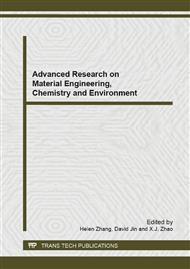p.554
p.558
p.562
p.567
p.571
p.575
p.578
p.582
p.586
Reinforced Concrete Frame Structure Based on ANSYS Optimization Analysis and Material Properties
Abstract:
This article mainly focus on the research in two-way horizontal earthquake under the action of 5-layer reinforced concrete frame structure optimization analysis. This research utilizes ANSYS software to realize parametric modeling. By using beam and column section sizes as design variables and tructural strength, stiffness, the maximal displacement between the layers as well as reinforcement component limit as constraint conditions, with overall minimum cost as objective function, it has carried on the static analysis, seismic response spectrum to structure analysis and optimization analysis on structures.Also, cross section change has been compared before and after the structure optimization to find out whether structure of various important parameters meet the specification requirements and and reflect the certain economy.
Info:
Periodical:
Pages:
571-574
Citation:
Online since:
September 2013
Keywords:
Price:
Сopyright:
© 2013 Trans Tech Publications Ltd. All Rights Reserved
Share:
Citation:


